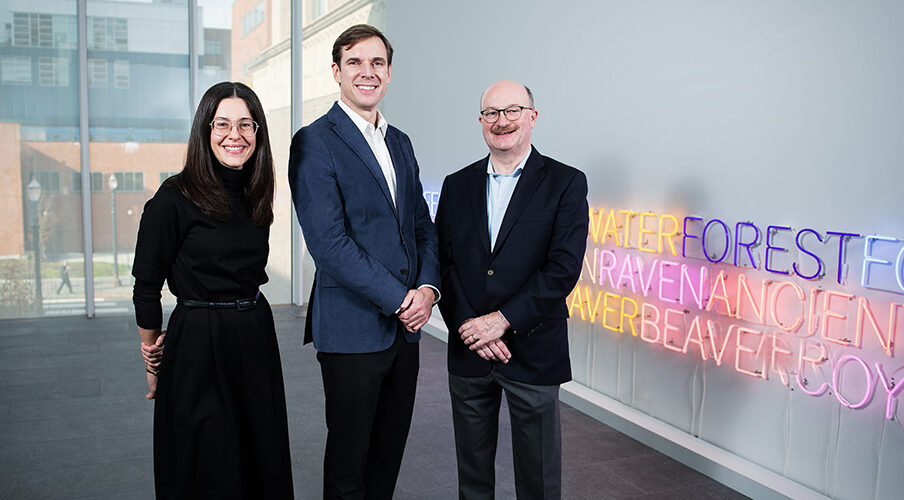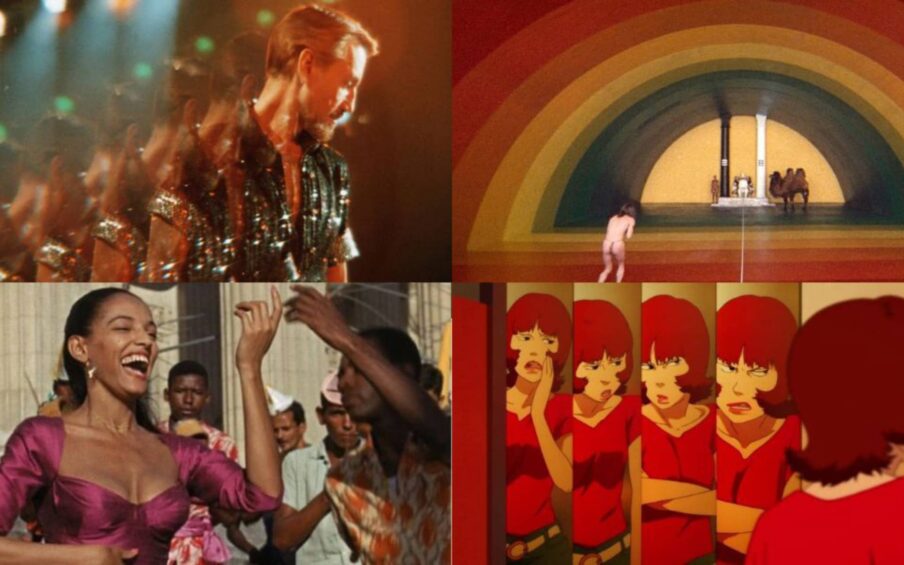Expanded and renovated Museum to feature complete reinstallation of permanent collection, Including nearly 300 new acquisitions by artists such as Simone Leigh, Ugo Rondinone, Marie Watt, and Carrie Mae Weems, Among Many others.
Collection objects never before exhibited in museum to comprise one-third of the total works on view.
Portland Art Museum (PAM) today shared details about what visitors will experience upon the opening of the Museum’s $111M campus expansion and renovation project in late 2025. The project to transform the existing museum will add almost 100,000 square feet of new or upgraded public and gallery space, providing new ways to experience its robust collection, updated amenities that address the needs of more diverse audiences, and increased access to exhibitions and programs. Expanded and renovated galleries will feature a complete reinstallation of the Museum’s wide-ranging collection, highlighting nearly 300 major new acquisitions including works by Jeffrey Gibson, Simone Leigh, Ugo Rondinone, Wendy Red Star, Pedro Reyes, Marie Watt, and Carrie Mae Weems, alongside works that are rarely or have never before been on view, revealing new perspectives that emphasize key themes of place, community, and identity.
“We cannot wait to welcome visitors to the reimagined museum that will offer new and unexpected ways to engage with beloved works, alongside recent, exciting additions to the collection,” said Brian Ferriso, Director of the Portland Art Museum. “As a cultural anchor in a Pacific Rim city, the Portland Art Museum’s collections and programs are shaped by a profound sense of place and enriched by significant Indigenous histories and a vibrant community of regional artists. The newly unveiled galleries will invite our community to see themselves in our collection, highlighting the myriad identities that make up the Pacific Northwest and presenting works by generations of nationally renowned artists who have drawn inspiration from Oregon’s natural beauty and Portland’s creative culture.”
Designed in partnership by Portland’s Hennebery Eddy Architects and Chicago-based Vinci Hamp Architects, PAM’s transformed campus will create a vital “cultural commons” in the heart of downtown Portland. The project centers on the creation of the 21,881-square-foot Mark Rothko Pavilion, which will provide a new transparent, welcoming “front door” to the museum. The glass Pavilion will connect the Museum’s two historic buildings—the landmark 1932 Main Building to the south, designed by Pietro Belluschi, and the Mark Building to the north, a former Masonic Temple designed by Frederick Fritsch in 1924 that houses the Jubitz Center for Modern and Contemporary Art—creating streamlined circulation across all four floors of gallery space. Upon the project’s completion, visitors will experience entirely reimagined permanent galleries; new, more intuitive pathways to encounter art; and increased visibility for PAM’s Native American and contemporary art collections.
PAM’s far-ranging collection also encompasses Northwest art, Asian art, European and American art, prints and drawing, photography, and new media and film. Over the past two decades, the Museum has significantly diversified its collection, adding works by historically underrepresented artists from across the region and the broader U.S., with an emphasis on acquiring works by women, Native American and Black artists, as well as by other artists of color. New acquisitions to the collection will be on view both in PAM’s galleries and in newly created outdoor public spaces, providing opportunities for the entire Portland community to engage with and experience art.
The reinstalled galleries will adopt a new approach to PAM’s collections, shifting from traditional chronological and geography-based presentations to thematic displays that tell stories that speak to the interests of Oregon audiences, introduce new perspectives, and foster dialogue about the ideas shaping our lives. Several galleries will also draw throughlines across PAM’s collection, adopting a more collaborative, cross-departmental approach to curation that allows visitors to discover new interpretations of and unexpected connections between the works on view. Underscoring this approach, the Grand Gallery in the new Rothko Pavilion will feature an inaugural exhibition of sculpture that spotlights favorite works alongside recent acquisitions to explore how artists use natural materials and depict nature in three dimensions.
Collection galleries
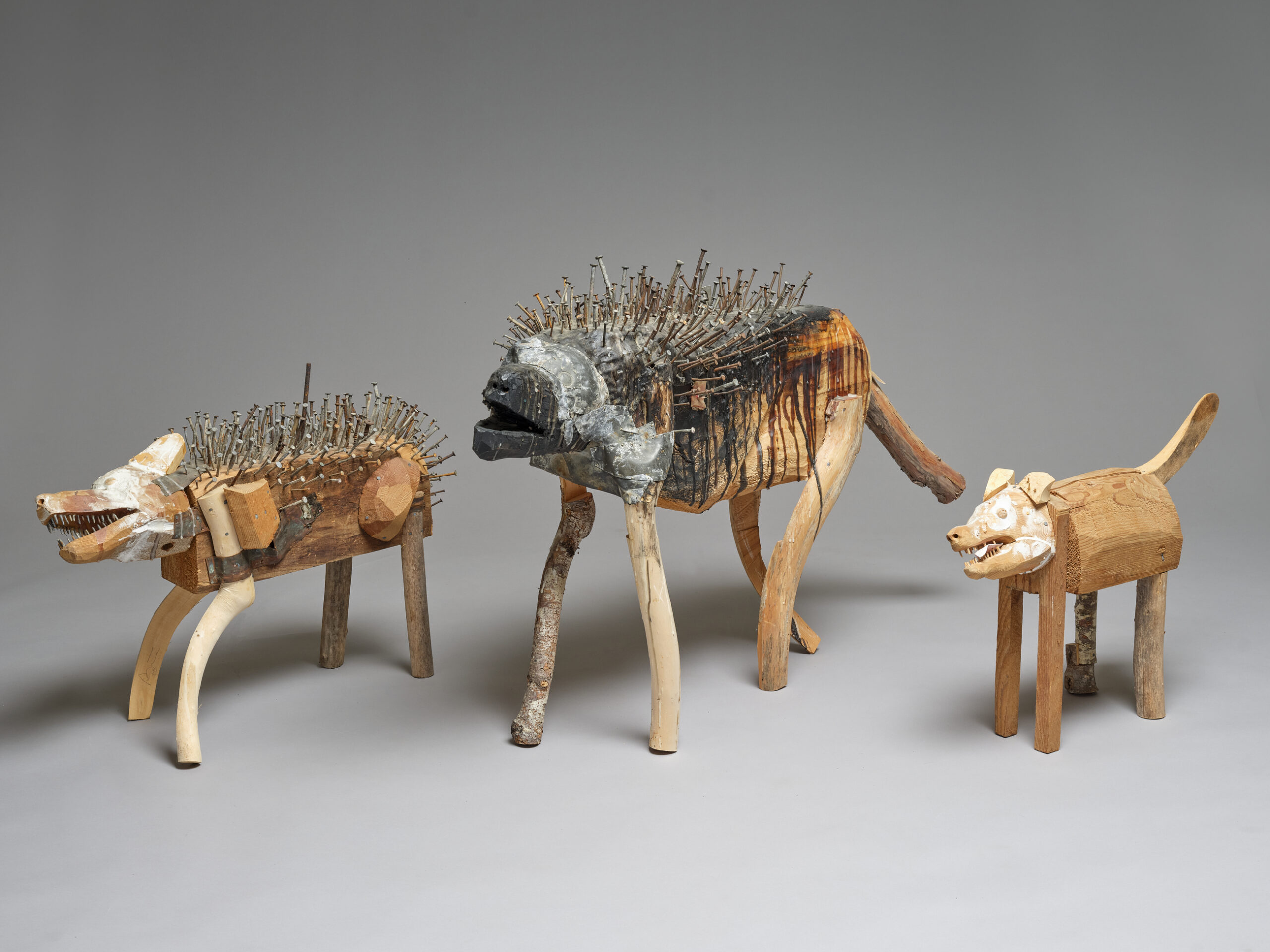
Native American art (second & third floors, Main Building)
Portland Art Museum’s Native American art collection of 3,500 objects spans works representing the experiences of approximately 200 Indigenous cultural groups throughout the Americas. The second-floor galleries will showcase the diversity of Native American art through Shifting the Narrative: 21st Century Acquisitions, an exhibition of contemporary and historic art in photography, sculpture, fashion, basketry, and more. The presentation will highlight PAM’s acquisitions from 2000 to 2025 including Apsáalooke artist Wendy Red Star’s síkahpoyíí / bishée / baleiíttaashtee (Motor Oil Buffalo Dress), 2013; Diné photographer Will Wilson’s portrait of Nicholas Galanin from the Critical Indigenous Photographic Exchange (CIPX – O’Keeffe), 2013; and Ponca artist Julie Buffalohead’s The Nourished, 2019, alongside favorite pieces from the collection, among them a traditional Kwakwaka’wakw feast dish.
The third-floor galleries, which bridge the Native American and Northwest Art collections, will feature an exhibition of work by Rick Bartow, one of the region’s most prominent Native artists. Rick Bartow: Storyteller will include over 40 works from both PAM’s collection and loans demonstrating the late Wiyot artist’s gift as a visual storyteller, from whimsical depictions of animals to distorted and dark self-portraits, using a wide range of media including painting, pastels, and mixed media sculpture.
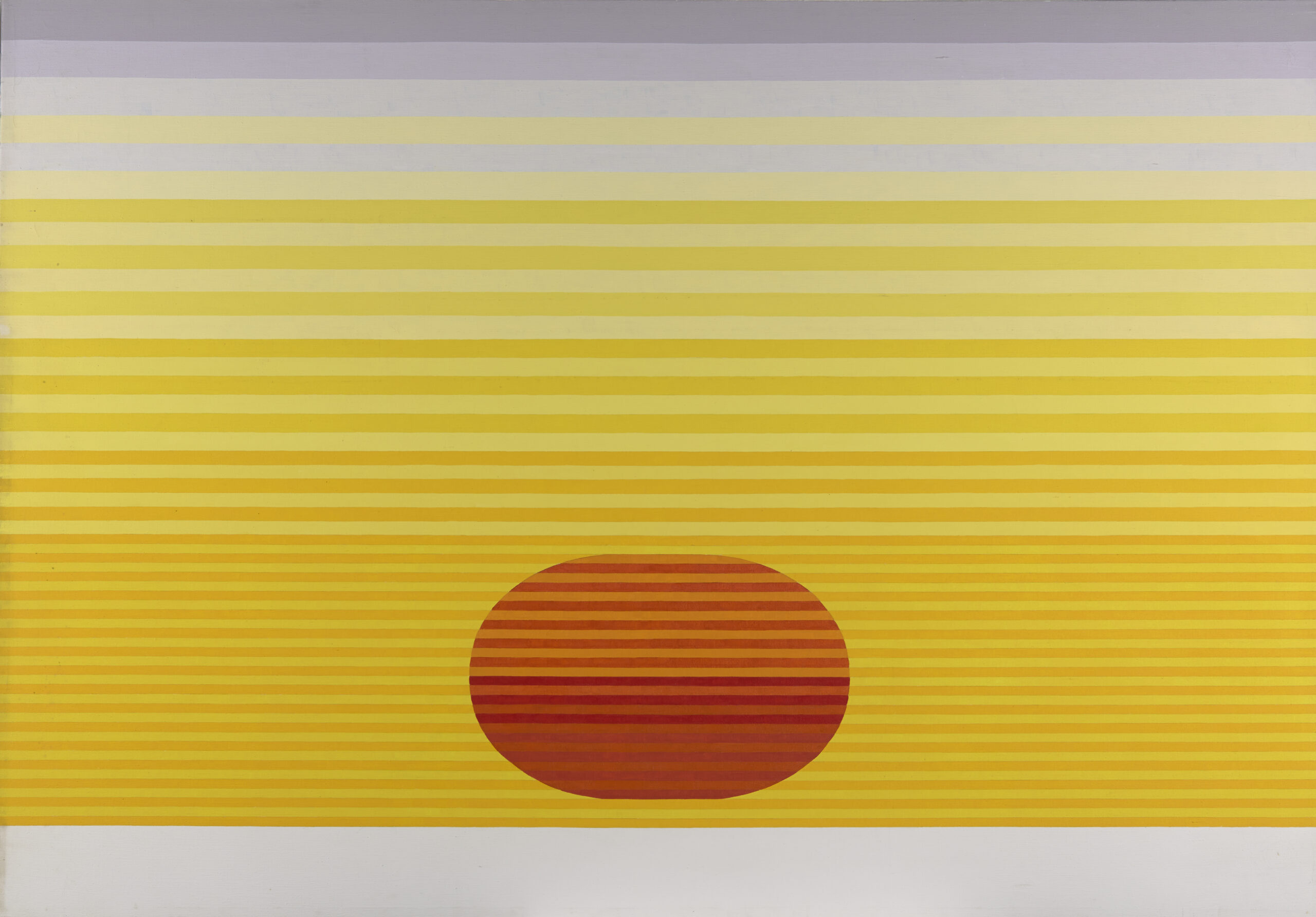
Northwest art (third & fourth floors, Main Building)
Continuing PAM’s tradition of amplifying Northwest artist voices, the third-floor galleries in the Main Building will feature a focused exhibition on Mary Henry, a painter from the region. On view will be a variety of works from Henry, from never-before-exhibited works on paper to large-scale geometric paintings, tracing the artist’s evolution from figuration to abstraction.
On view in the fourth-floor galleries will be works drawn from PAM’s growing collection of more than 10,000 objects by artists from the Northwest region, including many new acquisitions yet to be exhibited by artists such as Frank Okada, Dinh Q. Lê, V. Maldonado, Mary Ann Peters, and Tannaz Farsi, that reflect on personal history and identity forged through experiencing migration. The exhibition will further PAM’s dedication to serving as a living incubator for diverse stories from the region’s unique cultural heritage.

Modern and Contemporary art (first, second, third, and fourth floors, Jubitz Center for Modern and Contemporary Art, Mark Building)
For the inaugural year, the first floor of the Jubitz Center for Modern and Contemporary Art in the Mark Building will feature an exhibition space highlighting artwork that reflects the multitude of Black experiences in the United States. On view in this space will be Tenderhead, a solo exhibition featuring new works and a site-specific installation by Portland artist Lisa Jarrett; an exhibition of Black printmakers from PAM’s collection, including recent acquisitions from Derrick Adams, Robert Pruitt, Alison Saar, Kara Walker, and others; and Do I Look Like a Lady? (Comedians and Singers) (2016), a video installation by Mickalene Thomas. The gallery will also be visible through the museum’s transparent facade as visitors traverse a public passageway.
Showcasing more of the Museum’s monumental contemporary works, the spacious second level of galleries will exhibit visitor favorites from the collection, alongside a number of significant recent acquisitions that explore contemporary stories of identity, activism, and place. The reconfiguration of the voluminous and high-ceilinged contemporary galleries offers a new approach to exhibiting large-scale works and new ways for visitors to encounter the breadth of the collection. New acquisitions on view will include Wolfgang Tillmans’ Greifbar 50, 2017, and Simone Leigh’s Sentinel IV (Gold), 2021. PAM’s former library on the same floor will be redesigned as the Crumpacker Center for New Art, a 2,700-square-foot space dedicated to large-scale artists’ projects and innovative art forms. Inaugurating the new gallery will be an installation of Pipilotti Rist’s 4th Floor to Mildness (2016), making its West Coast debut at PAM. The groundbreaking video artist will transform the gallery into a space filled with luminous color, moving imagery, and melodic sound, creating an environment that allows visitors to relax and lose themselves in the work.
The upper floors of the Jubitz Center for Modern and Contemporary Art will show selections from the modern collection, highlighting its strength in Light and Space artists from the 1960s to 1980s with works that explore perception, surface, materials, and process. The top-level gallery will be dedicated to a focused exhibition on Mark Rothko, the namesake for PAM’s new pavilion and a onetime Portlander, reintroducing local audiences to one of the foremost American artists of the twentieth century. The exhibition will include works on loan from the Rothko family’s unparalleled collection, secured through a unique partnership with the Museum. Further exploring the artist’s legacy, an accompanying exhibition on the same floor will showcase innovations in abstract painting with works by women artists and artists of color, alongside other major figures in PAM’s collection. Joining collection favorites by Helen Frankenthaler, Kenneth Noland, and Anne Truitt, recent acquisitions on view in this presentation include works by Kay WalkingStick, Reginald Sylvester II, Tabor Robak, and Morris Louis.
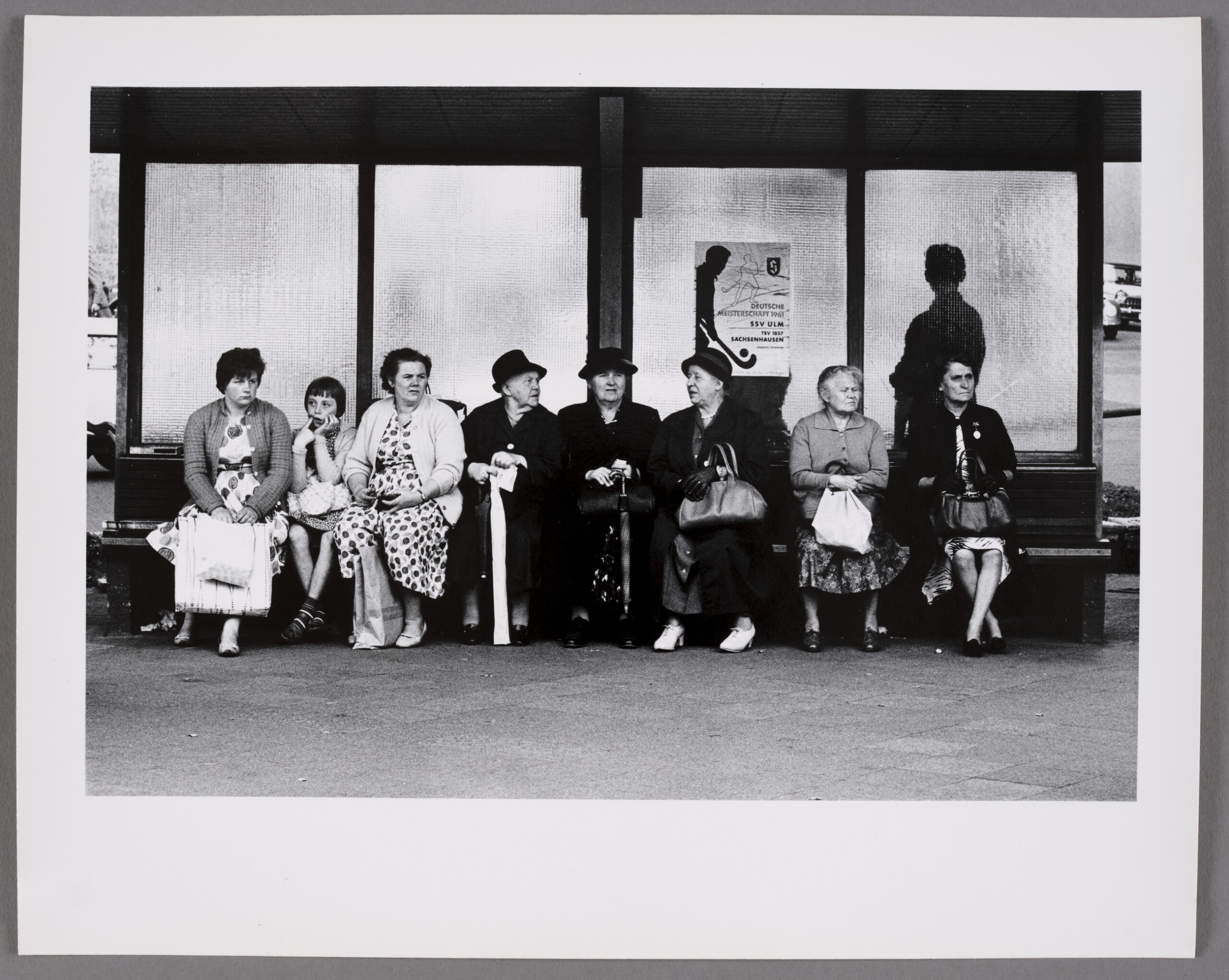
Photography (second floor, Main Building)
With a newly expanded footprint in the Museum, the 3,342-square-foot photography galleries will present Together, an exhibition of 60 photographs, including several recent acquisitions from artists such as Berenice Abbott, Ray Metzker, Leah Kolakowski, and Emery Barnes, that picture groups of people in community. The first new exhibition of photography from PAM’s collection since 2021, Together will emphasize how photography meaningfully connects us to each other and documents the connectedness in our lives. The galleries will also feature works that explore how photography connects us to place with an array of images that explore West Coast landscapes of the United States, as well as a focused study on the history of photography and the evolution of photographic materials.
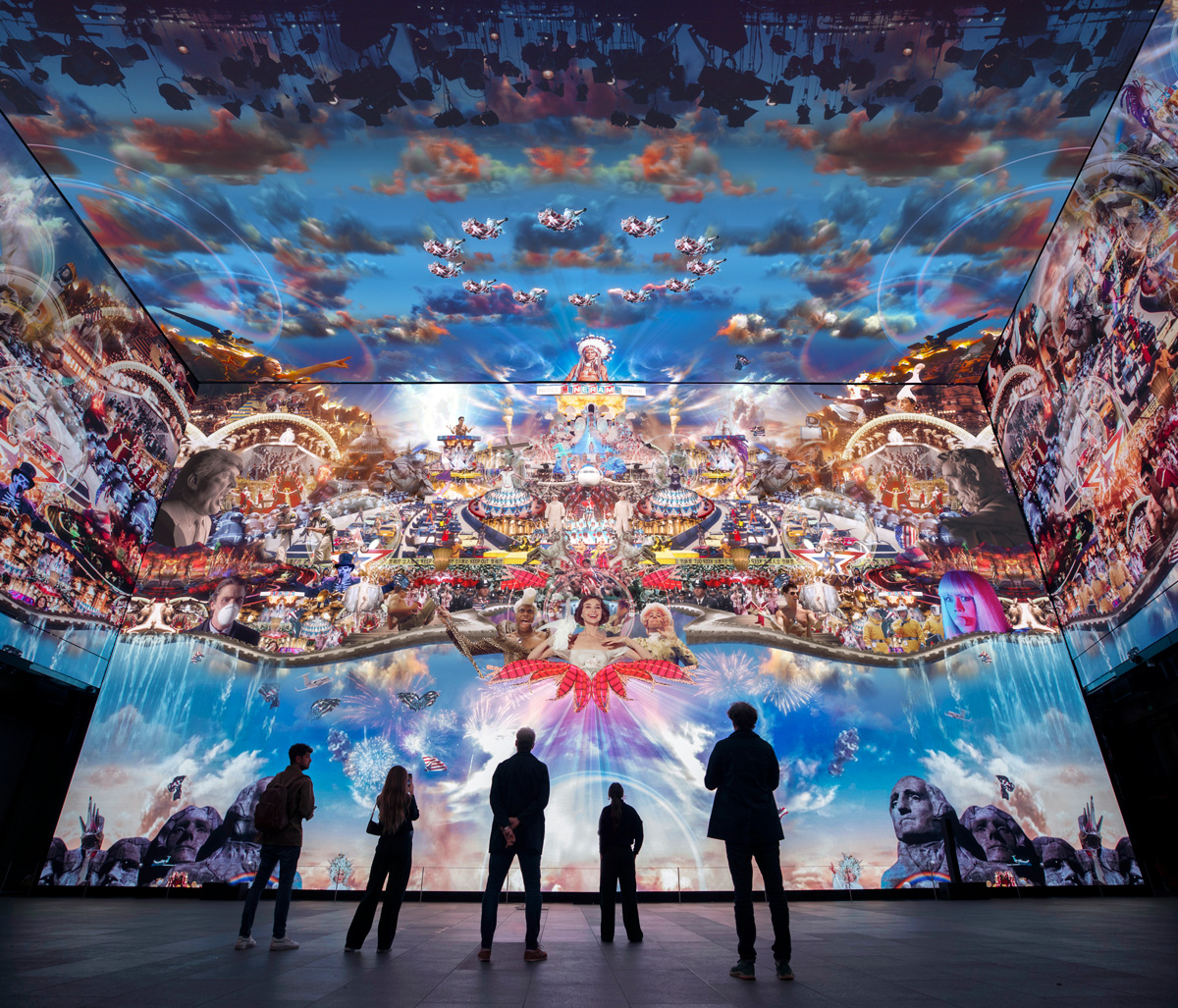
New Media (lower level, Main Building)
Located on the lower level of the Main Building just outside of PAM’s newly restored Whitsell Auditorium, the new media gallery will feature a single large-scale work by Marco Brambilla, Heaven’s Gate, 2022. Adapted especially for PAM to fill this space, the hyper-saturated image unites familiar film characters with fantastical set pieces, transforming them into infinitely looping memes trapped in time.
Together, the Whitsell Auditorium and dedicated gallery for new media create a new destination to showcase PAM CUT // Center for an Untold Tomorrow, the Museum’s film and new media program. Events, installations, and activations in these spaces will complement the cutting-edge programming taking place at the Tomorrow Theater, PAM CUT’s space in Southeast Portland.
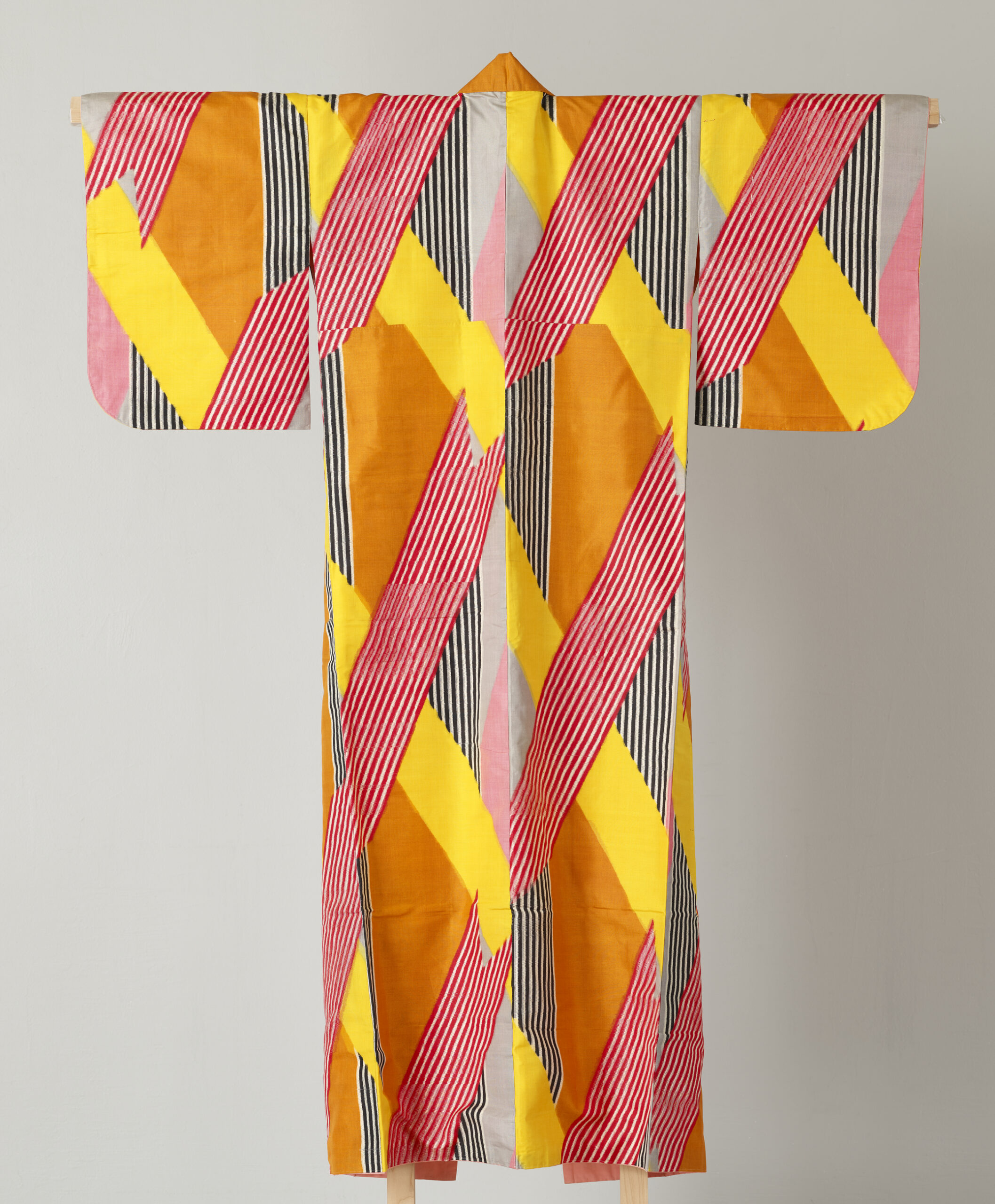
Asian art (first floor, Main Building)
Showcasing PAM’s robust collection, which has been a focused area of collecting since the museum’s inception, the Asian art galleries will display a mix of contemporary and historic works, featuring recent acquisitions alongside loans from notable collections. Visitors will first encounter the inaugural exhibition, MAKERS: The Culture of Craft, spotlighting the beauty of everyday objects from the Japanese collection across time periods. The exhibition draws its inspiration from Portland’s vibrant maker culture that has long made the city a destination for artists and creatives. Adjacent galleries focused on works from Japan, Korea, and China will include contemporary Japanese ceramics by women artists, recently gifted works by Japanese photographer Kenji Nakahashi, a newly conserved Korean screen painting, the arts of Buddhism from across Asia, and significant works from PAM’s Chinese collection that emphasize its strengths in Han dynasty and early Chinese art.
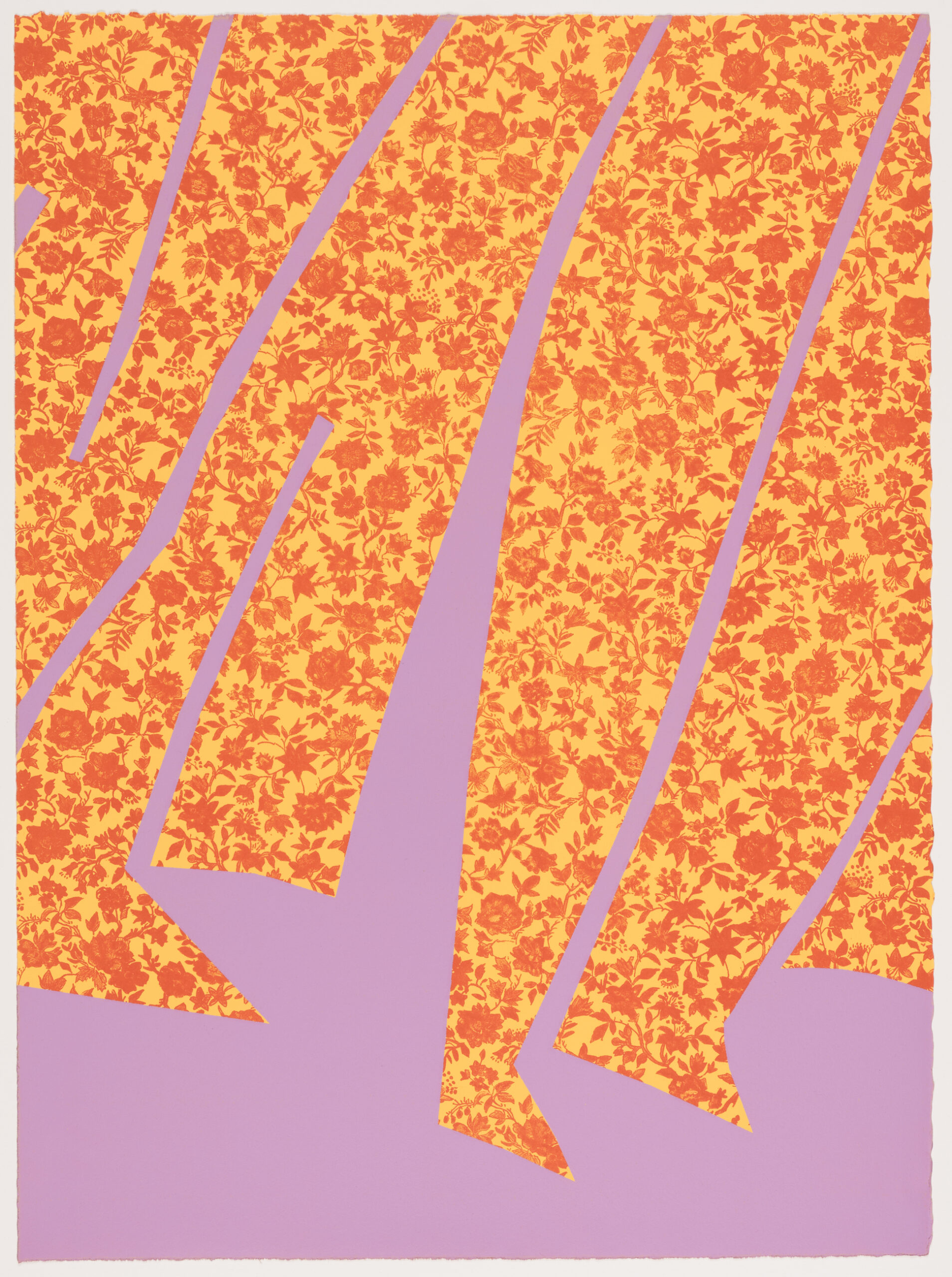
Prints & drawings (lower level, Main Building)
The prints and drawing galleries will emphasize the PAM collection’s strong sense of place, uplifting the history of printmaking in the Pacific Northwest with Inkling Studio: Printmaking in Portland, 1981-2009. The exhibition tells the story of a cooperative print studio in Portland that fostered community and inspired dozens of artists including Sherrie Wolf and Tom Prochaska. A special presentation of lithographs by Paul Harris will also be on view in a newly created gallery space for rotating exhibitions on the second floor of the Main building. The exhibition will present 20 recently gifted, colorful lithographs from Harris’ Shut-in Suite, 1969-70 series depicting vibrant tableaus that reflect upon the isolation, beauty, and magic of everyday life.
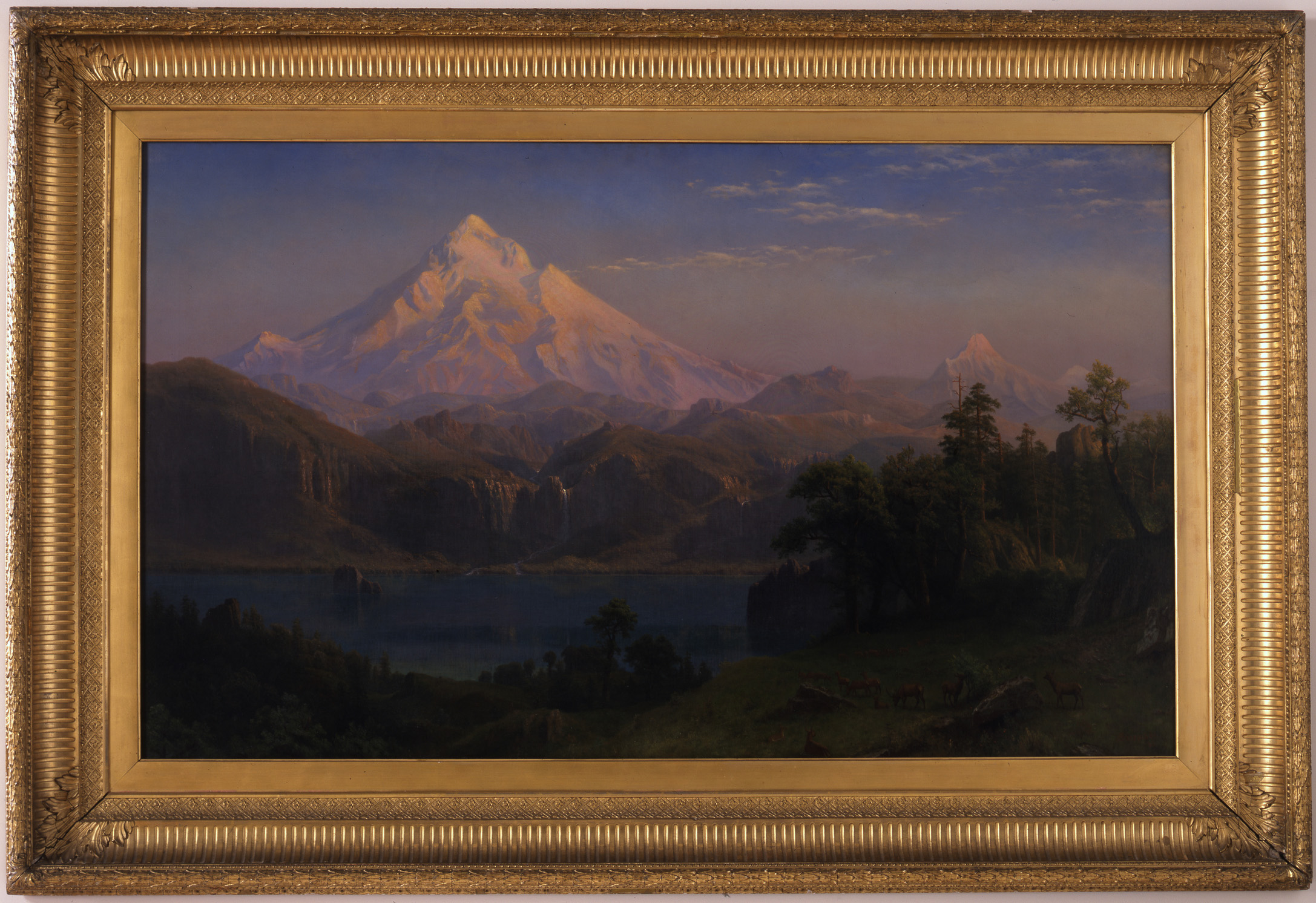
European and American art pre-1930 (second floor, Main Building)
Spread across nine galleries, paintings, sculpture, vases, silver, busts, and more works from the European and American collections will be featured in thematic presentations that provide visitors new entry points to engage with, understand, and appreciate PAM’s collection. The European galleries will examine portraiture as an expression of identity and impressionism as a global phenomenon, highlighting the museum’s outstanding collection of classic French Impressionist masterpieces alongside works that trace this movement as it was interpreted around the world. Among the works on view will be one of the collection’s treasures, Claude Monet’s Waterlilies, 1914-15, freshly restored by PAM’s conservation staff in 2024.
The American galleries will explore landscape paintings from across the United States; depictions of home life versus city life; and American painting in late 19th and early 20th centuries, marking a pivotal moment in U.S. history as America transitioned into the modern age. Paintings on view will include a mix of visitor favorites and rarely seen works from nationally celebrated artists such as John Singer Sargent, Albert Bierstadt, and Eliza Barchus. To encourage dialogue around the works, they will be paired with objects from other areas of PAM’s collection, such as sculpture by William Edmondson and selections of Native beadwork, that confront or engage the themes in the paintings. Continuing this cross-departmental curatorial collaboration, the landscape galleries will include a mix of European painting, photography, and Japanese prints, highlighting how a natural monument, such as the Portland area’s Mount Hood, can be the anchor of identity for an entire region.
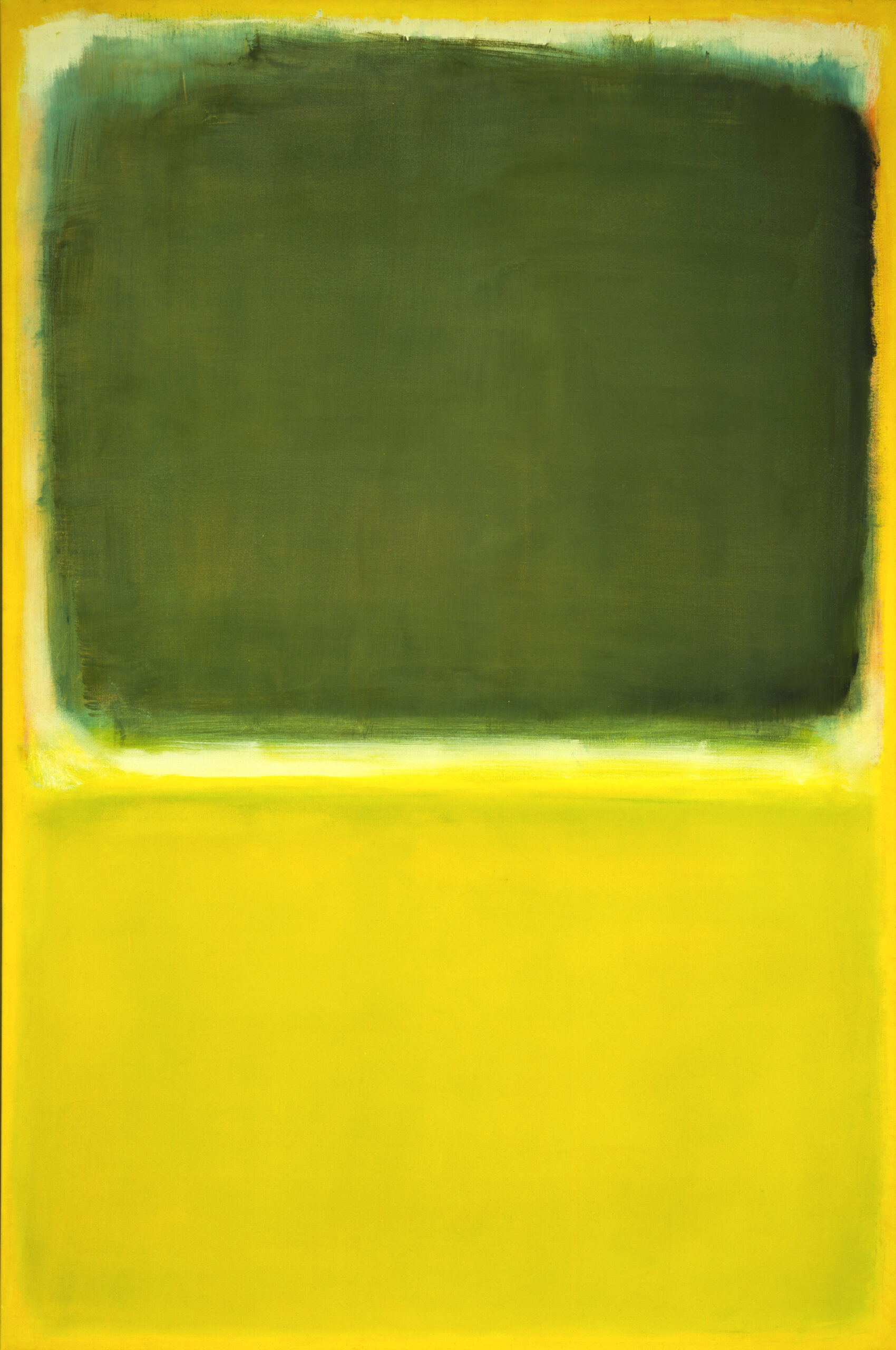
PAM’s new campus
In addition to offering visitors new ways to make meaningful connections with art, the transformed campus will provide areas for the community to rest, reflect, and gather—inside the museum, on second and fourth-floor terraces overlooking the street and parks below, and in an outdoor public plaza on the west side of the new Pavilion where a new acquisition, the sun, 2018, by Ugo Rondinone, will be installed. A new café and expanded store will also be accessible from the West Plaza, providing another public entry point. The design for the Pavilion incorporates an open-air passageway through the building connecting the museum’s East and West Entry Plazas to Portland’s South Park Blocks. The sheltered passageway provides unique views into museum galleries and lobby for pedestrians and bicyclists who pass by.
Named in honor of Mark Rothko, who spent his childhood in Portland after his family emigrated from Latvia and who took classes at the Museum’s art school, PAM’s Rothko Pavilion will offer glimpses of the art and activity during the day and at night, the lit-up crystalline pavilion will glow, serving as a beacon for the arts downtown.
PAM’s campus is a cornerstone of the downtown Portland cultural district, serving as an important source of inspiration for those who live and work in Oregon. As one of the oldest museums in the Pacific Northwest and the only major art museum between Seattle and San Francisco, PAM is an essential cultural lifeline for the region with a diverse slate of exhibitions and programs that highlight art from around Oregon, the region, and the world.

Investing in PAM’s future
The Museum’s $111 million expansion represents one of the most significant capital investments in the arts in the history of Oregon.
The fundraising campaign to expand PAM and increase the Museum’s endowment has raised $125.9 million as of September 30, 2024, of its $141 million goal, 98 percent of which is privately funded. The campaign includes $111 million in construction costs and $30 million to grow the Museum’s endowment, ensuring that it remains a civic anchor for generations to come. More than 400 donors have expressed their support through contributions to the campaign as of September 30, 2024, with gifts ranging in size from $1,000 to over $13 million. Fundraising is ongoing to complete the campaign.
Generous contributions from donors, extending beyond the Connection Campaign, have enabled major new acquisitions, enriching the collection for the transformed campus. PAM is pleased to acknowledge the gift of the Miller Meigs Collection, Simone Leigh, Sentinel IV (Gold), 2021; the acquisition of Ugo Rondinone’s the sun, 2018, made possible by Frances and John von Schlegell; and Painting the Town, 2021 by Carrie Mae Weems, generously gifted by the artist.

